Real-time analytics provide insights
into how well agents
are leveraging
Knowbler for achieving the knowledge-first approach.
It is a stacked area graph that keeps you on top of two crucial metrics; the total number of cases closed and the contribution of agent-generated content in closing them. Support Effectiveness Data includes :

This report helps you identify the knowledge workers who create the most articles and the impact of their work on reducing the TTR for cases that have the knowledge created by them linked to the case. They, in turn, can guide other employees to better contribute to the knowledge management initiative. Contribution analytics by an agent can be shown through :
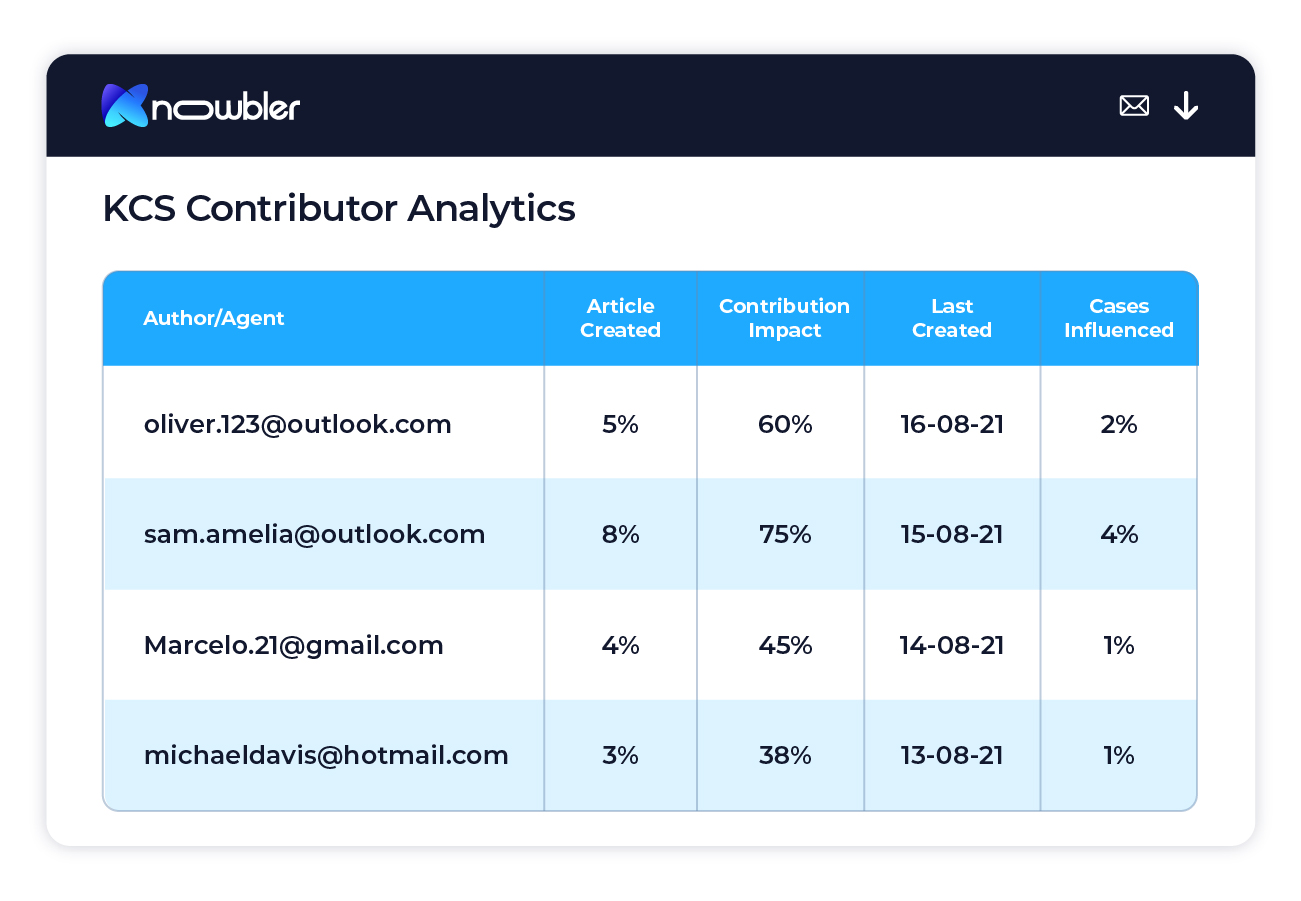
This report helps monitor metrics that can be used to quantify the impact of Knowbler on your support team’s efficiency. The impact, measured in terms of article shares, can be converted into hours of effort and dollars saved.

This report helps discover articles which had zero to very low impact on case resolution. The impact is measured in terms of share count. An article that’s never been shared or shared only one, two, or three times, may require some action. This report helps you identify those low-performing articles and take appropriate action. The sole section in Low Impact KB Articles is Least Used Articles. You can filter the list using:
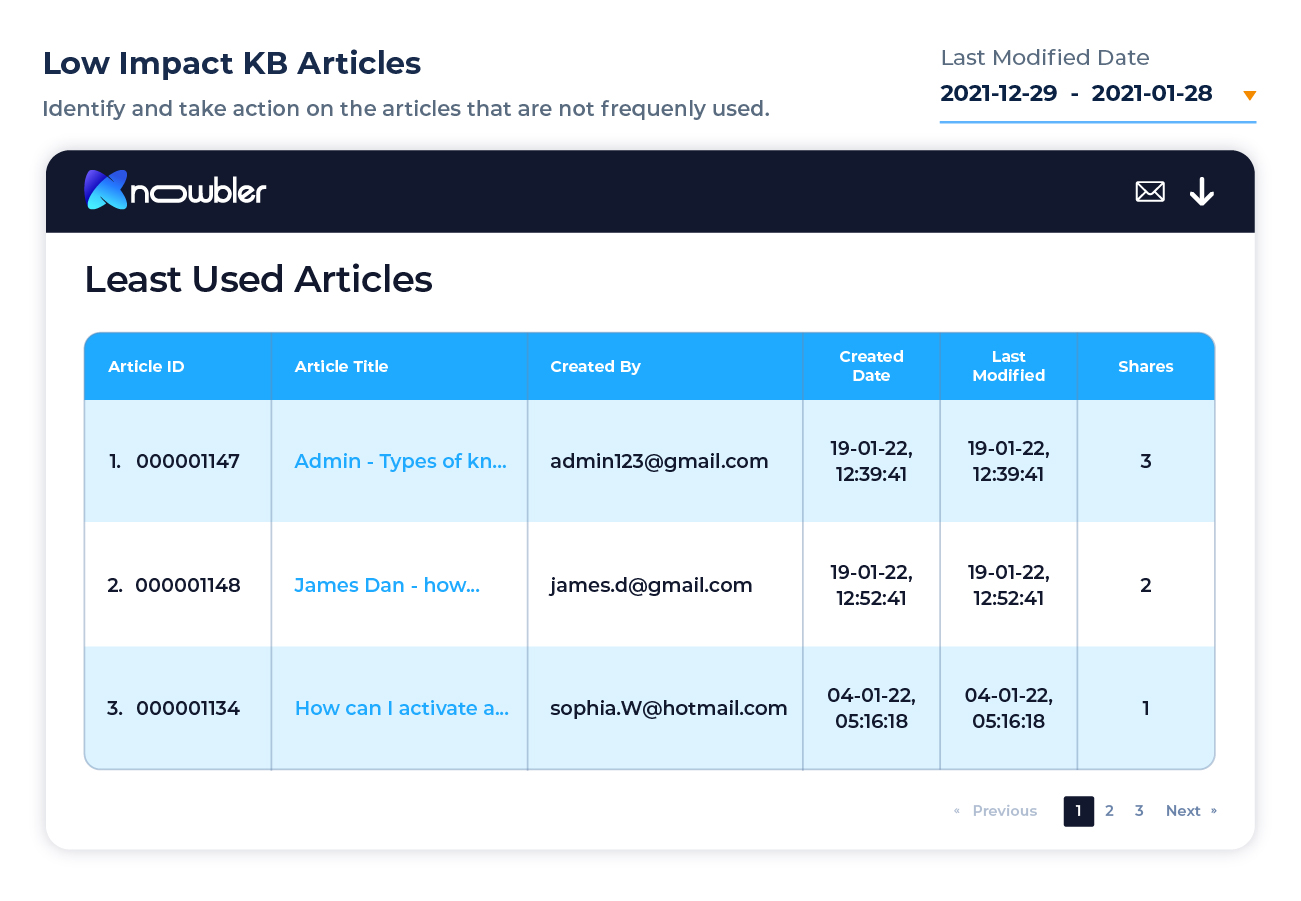
By leveraging the power of machine
learning, Knowbler
offers real-time insights
into content health and standard.
It lists the contribution of each agent to overall content health by highlighting the agent's score on each of the following parameters:

This report lists all the active Content Health parameters and the respective articles that don't meet the content health criterion.

Evaluates knowledge consumption trends and the value of created knowledge in improving support and self-service outcomes.
It gauges the total closed case volume that had the potential to link KB articles and the definite knowledge linking rate. The gap in the knowledge linking will help support managers learn when agent training is necessary. Additionally, it will help access if the the relevant knowledge results are populating correctly, when searched by end users.

It checks if knowledge was linked to cases, and how much was the accuracy of article linkage. It will help support managers ensure the proper training resources for their agents and provide them with insights into which knowledge needs to be revised.
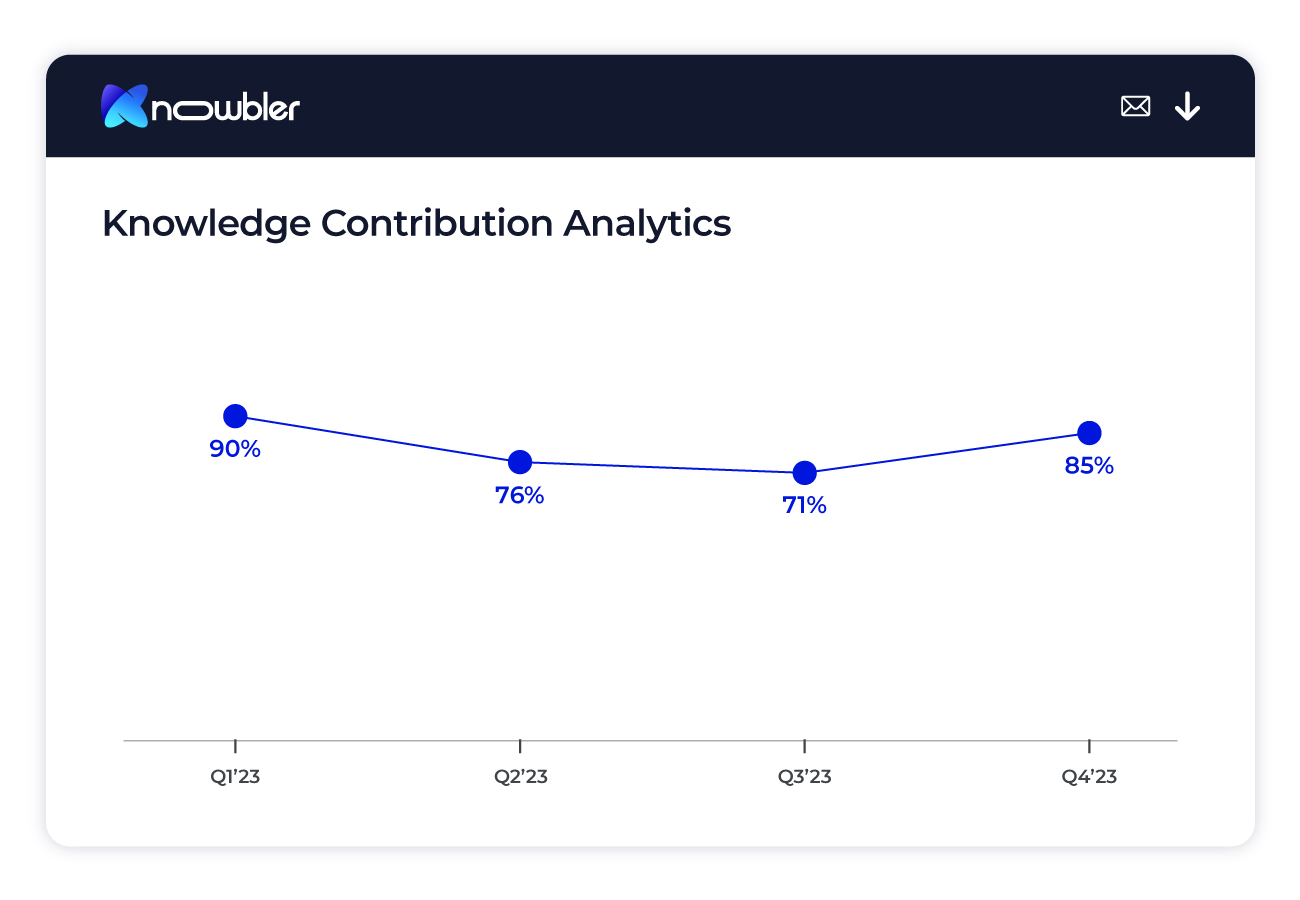
This indicates the opportunity to create and revise knowledge articles.

Content value score gauges the frequency of knowledge linking by other agents, frequency of knowledge consumption on self-service channels ( via average number of page views ), and incorporates the feedback shared by end-users on the knowledge usage.
Content standard score indicates the quality of knowledge articles on a scale of 10, based on parameters including uniqueness, completeness, title relevancy, link validity and metadata accuracy, content clarity.

This presents an overview of agents’ activities, including number of articles published, revised, articles in backlog, etc.
It calculates the number of articles published and revised, by support agents and the days taken to complete the publishing or revision process, indicating article ageing.

It represents the knowledge articles that are currently in drafts or review stage, and indicates the duration they have been in these respective stages.

To showcase organizations the value of Knowbler, its ROI for support organizations, and the value they achieved from its adoption.
It categorizes the case into “new” and “known” to identify trends and patterns in customer cases, prioritize critical “new” cases, and discover the areas where additional training or resources are required. It also help access how mature the current KB is, in resolving the known cases efficiently.

It measures the time and cost saved through enabling customers to find resolutions independently through self-service articles and through enabling agents to link these articles to relevant cases.
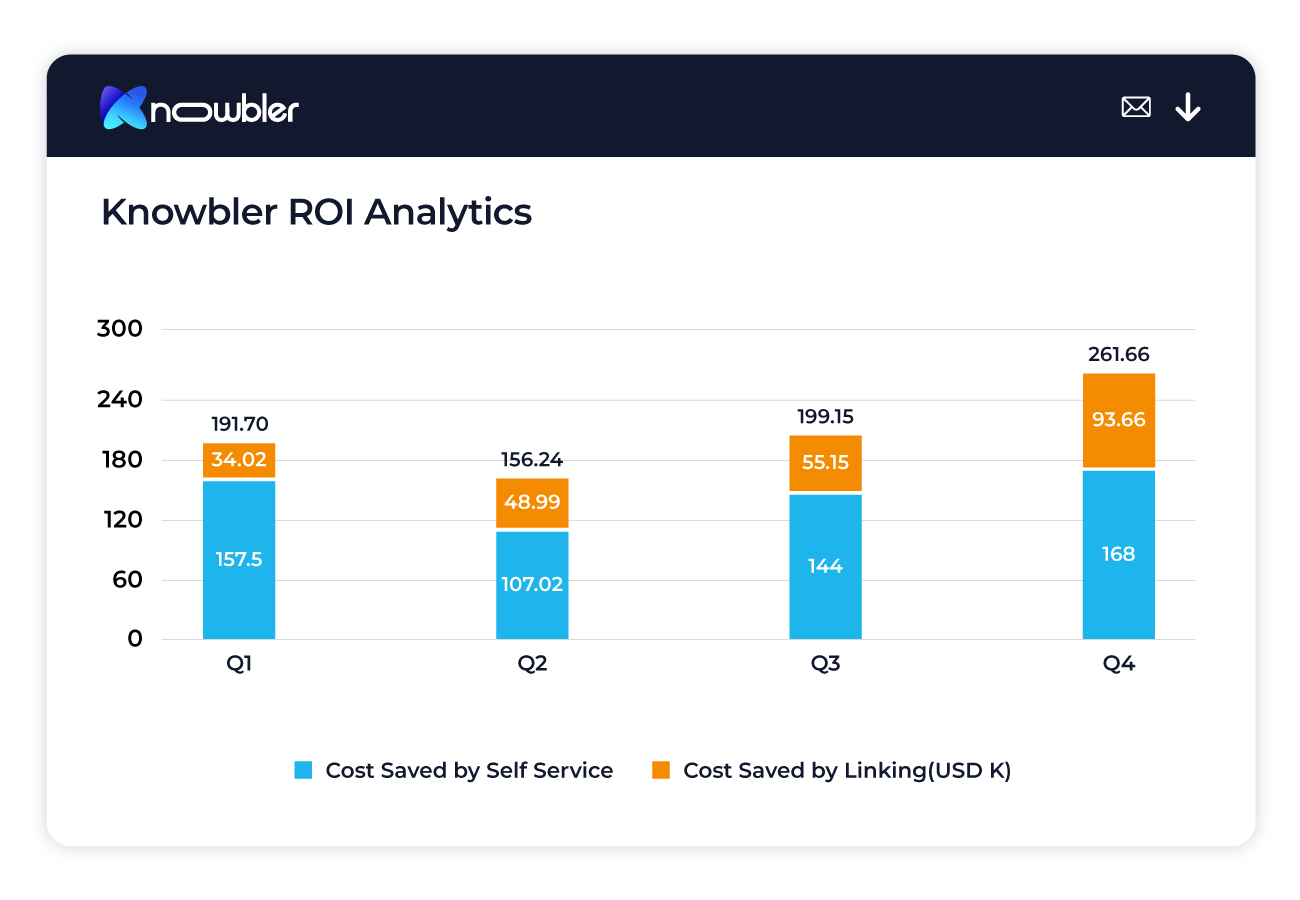
Fueled by LLM-powered rich insights, Knowbler visualizes the correlation between cases logged and knowledge base data
It visualizes the correlation between cases logged and knowledge base data, enabling the timely creation of new knowledge for specific cases.
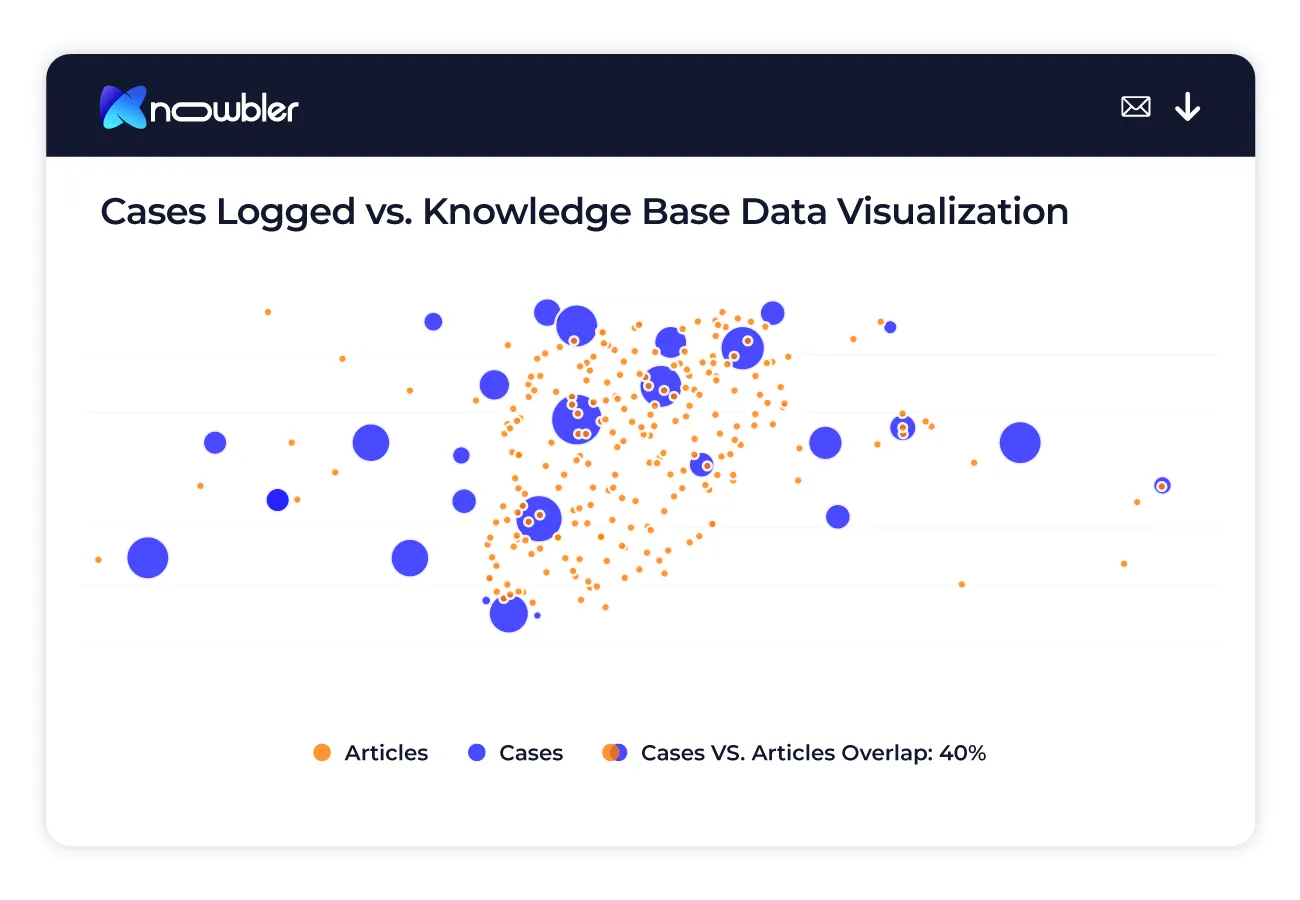
Fueled by insights from Knowbler’s Knowledge Gaps Visualization report, this feature leverages advanced clustering algorithms to analyze case data and identify patterns, grouping similar cases into distinct clusters. By analyzing these clusters and their overlap with existing knowledge articles, Knowbler’s Intelligent Insights dashboard provides actionable recommendations for new article topics, directly addressing identified knowledge gaps.
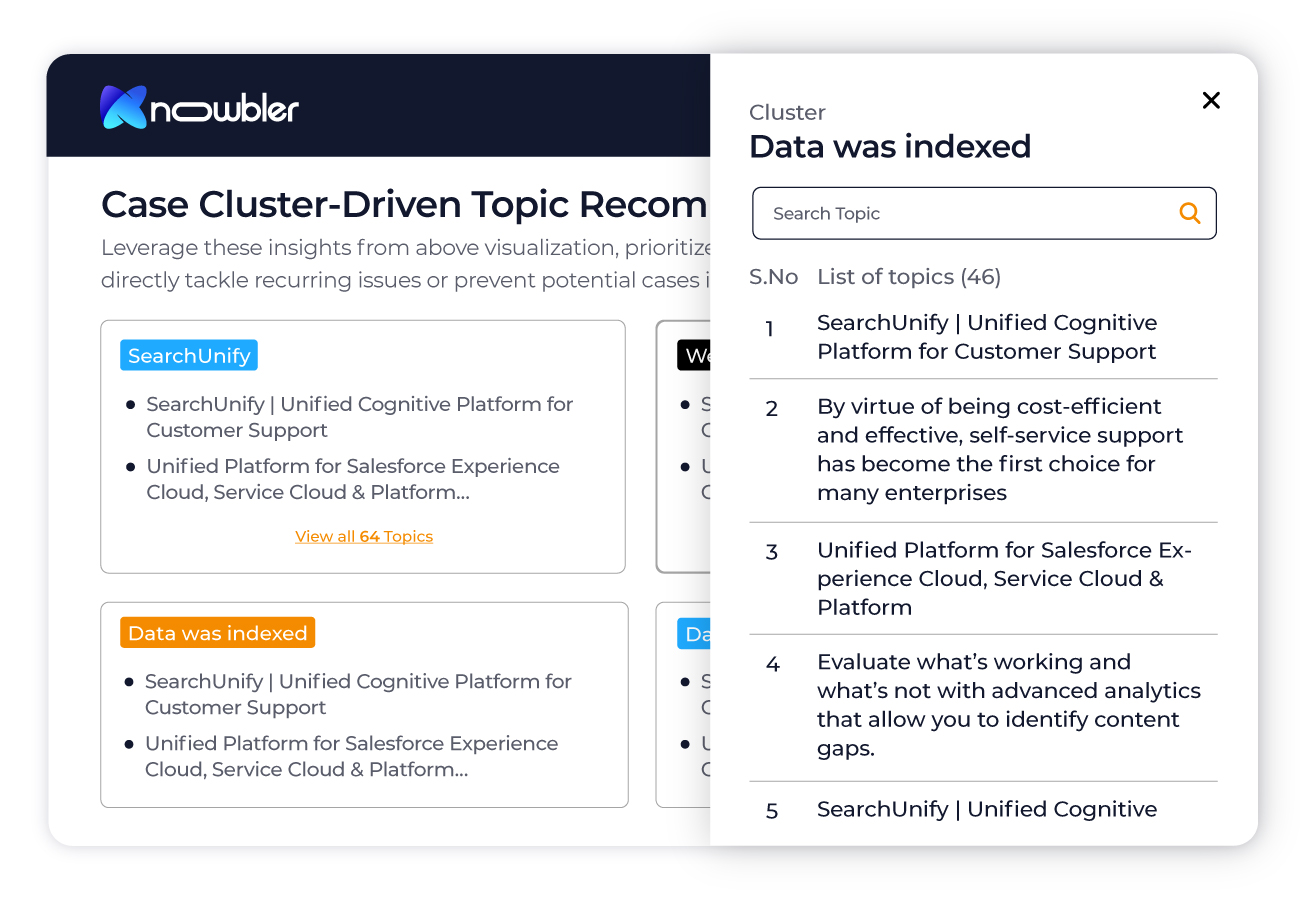
Ready to Elevate Your Customer & Employee Experiences? Let's Talk